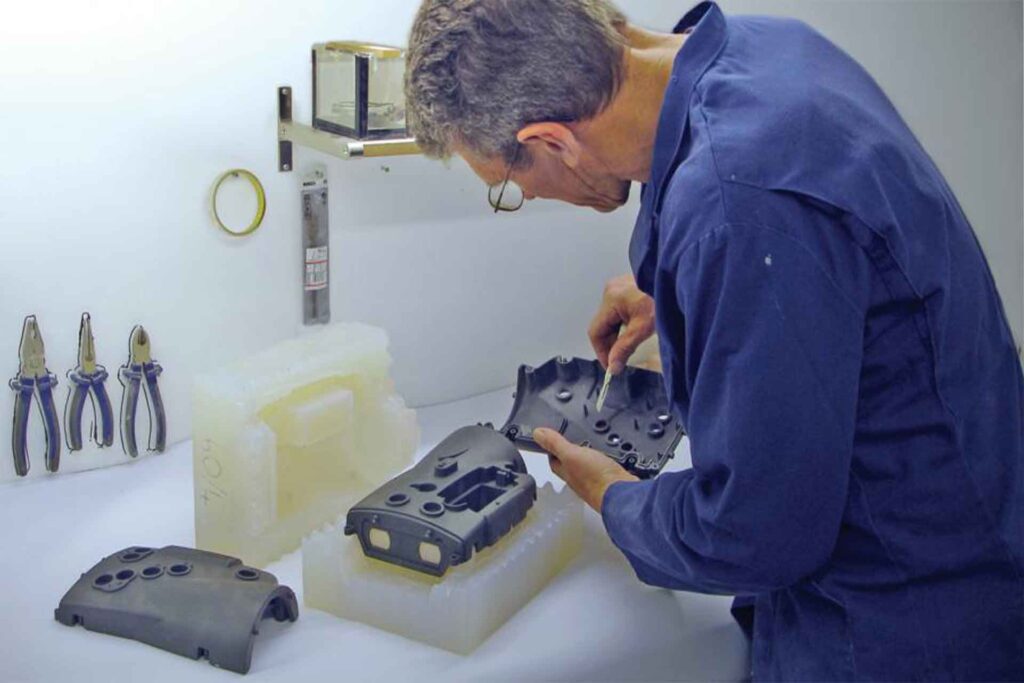Peripheral milling, also known as plain milling, is a crucial process in manufacturing that focuses on removing material from the surface of a workpiece using a rotating milling cutter. It is widely used in metalworking to improve metal removal rates and extend tool life. To maximize the efficiency of peripheral milling, it is important to understand the nuances of various milling techniques and tools. In this blog, we will explore strategies to optimize peripheral milling operations, focusing on cutting techniques, cutter choices, and key parameters that ensure the best results in terms of precision, tool longevity, and material removal.
1. Up Milling vs. Down Milling: Choosing the Right Approach
One of the key decisions in peripheral milling is choosing between up milling (conventional milling) and down milling (climb milling). These two techniques differ in terms of cutter direction and impact the cutting forces, tool wear, and material removal rates.
- Up Milling: In up milling, the cutter moves against the feed direction, leading to an increased cutting force. It is suitable for rough cutting, especially with ferrous materials. However, it tends to produce higher tool wear and requires more cutting power.
- Down Milling: In down milling, the cutter moves in the same direction as the feed. This technique minimizes cutting forces and reduces tool wear, making it ideal for surface finishing and precise machining. It is especially effective for aluminum and alloys, where tool longevity and heat reduction are critical.
By selecting the appropriate milling technique based on the material and desired finish, manufacturers can optimize both cutting efficiency and tool life.
2. Key Peripheral Milling Methods: Efficient Tool Use
Peripheral milling encompasses various methods, each with its own applications and advantages. Understanding when and how to use these methods ensures optimized milling performance:
- Slab Milling: Ideal for removing large volumes of material and creating flat surfaces, slab milling is often used when reducing part thickness is a priority. It is particularly useful when working with larger workpieces that need extensive material removal.
- Slot Milling: For creating channels and slots in the workpiece, slot milling is an efficient method. It is commonly used when precise and fine slots are required for specific designs.
- Side Milling: This method involves machining vertical surfaces at a right angle to the cutter’s axis. Side milling is used when creating flat vertical surfaces or machining the sides of a part.
- Gang Milling: Gang milling allows for simultaneous machining of multiple parallel surfaces. By mounting several cutters on the same arbor, manufacturers can efficiently process multiple features in a single pass.
Each of these milling methods has distinct benefits depending on the project requirements. Choosing the right method for each operation helps reduce machining time and improve overall efficiency.
3. Choosing the Right Milling Cutter: Maximizing Efficiency
The type of milling cutter used significantly impacts the outcome of peripheral milling operations. Different cutters are designed for specific applications, and selecting the right cutter ensures optimal material removal and surface finish.
- Slab Milling Cutter: Ideal for horizontal milling and large material removal, slab milling cutters are commonly used for creating flat surfaces.
- Side Milling Cutter: These cutters are effective for cutting slots and straddle milling. They are useful for precision machining in applications that require slot creation.
- Staggered Milling Cutter: With teeth arranged in a zig-zag pattern, staggered milling cutters are ideal for slot milling where depth is larger than width. This design prevents interference during the cutting process.
Selecting the correct cutter based on the desired surface finish and material type is essential for efficient machining.
4. Optimizing Chip Thickness and Cutting Parameters
An essential factor for effective peripheral milling is the balance between chip thickness and cutting width. Maintaining an optimal chip thickness helps to reduce cutting forces and prevent excessive tool wear.
- Chip Thickness to Cut Width Ratio: A balanced ratio between chip thickness and the width of the cut ensures smoother material removal and extends tool life. Thin chips at the exit and small engagement arcs are beneficial for reducing tool wear.
- Workpiece Entry – Rolling into the Cut: The method of entry into the workpiece also plays a crucial role in reducing cutting forces and improving tool longevity. The rolling-in entry technique, where the cutter gradually enters the material, minimizes temperature and vibration, resulting in better overall machining performance.
By paying close attention to these key parameters, manufacturers can fine-tune their milling operations to optimize both tool life and material removal efficiency.
5. Enhanced Milling Efficiency with Rolling-In Entry
The rolling-in entry technique offers several advantages over traditional direct entry methods. By gradually engaging the cutter, the rolling-in approach reduces cutting forces and minimizes temperature buildup. This results in better chip formation and reduced tool wear, ultimately leading to a smoother, more efficient milling process.
The gradual engagement of the cutter is especially beneficial in reducing vibrations, which can affect the accuracy of the machining process. Additionally, rolling-in entry helps maintain a more consistent chip thickness throughout the cut, ensuring a high-quality surface finish.
Conclusion: Mastering Peripheral Milling for Optimal Performance
To achieve the best results in peripheral milling, manufacturers must strategically choose the right milling technique, cutter, and cutting parameters for each project. By understanding the differences between up milling and down milling, optimizing milling methods like slab and slot milling, and selecting the appropriate cutters for the job, manufacturers can ensure efficient, high-quality production.
Moreover, focusing on key factors such as chip thickness, cutting force, and the rolling-in entry technique can further enhance the performance of milling operations, extending tool life and improving overall efficiency. With these strategic techniques, manufacturers can optimize their peripheral milling processes for better results, reduced tool wear, and increased productivity.
